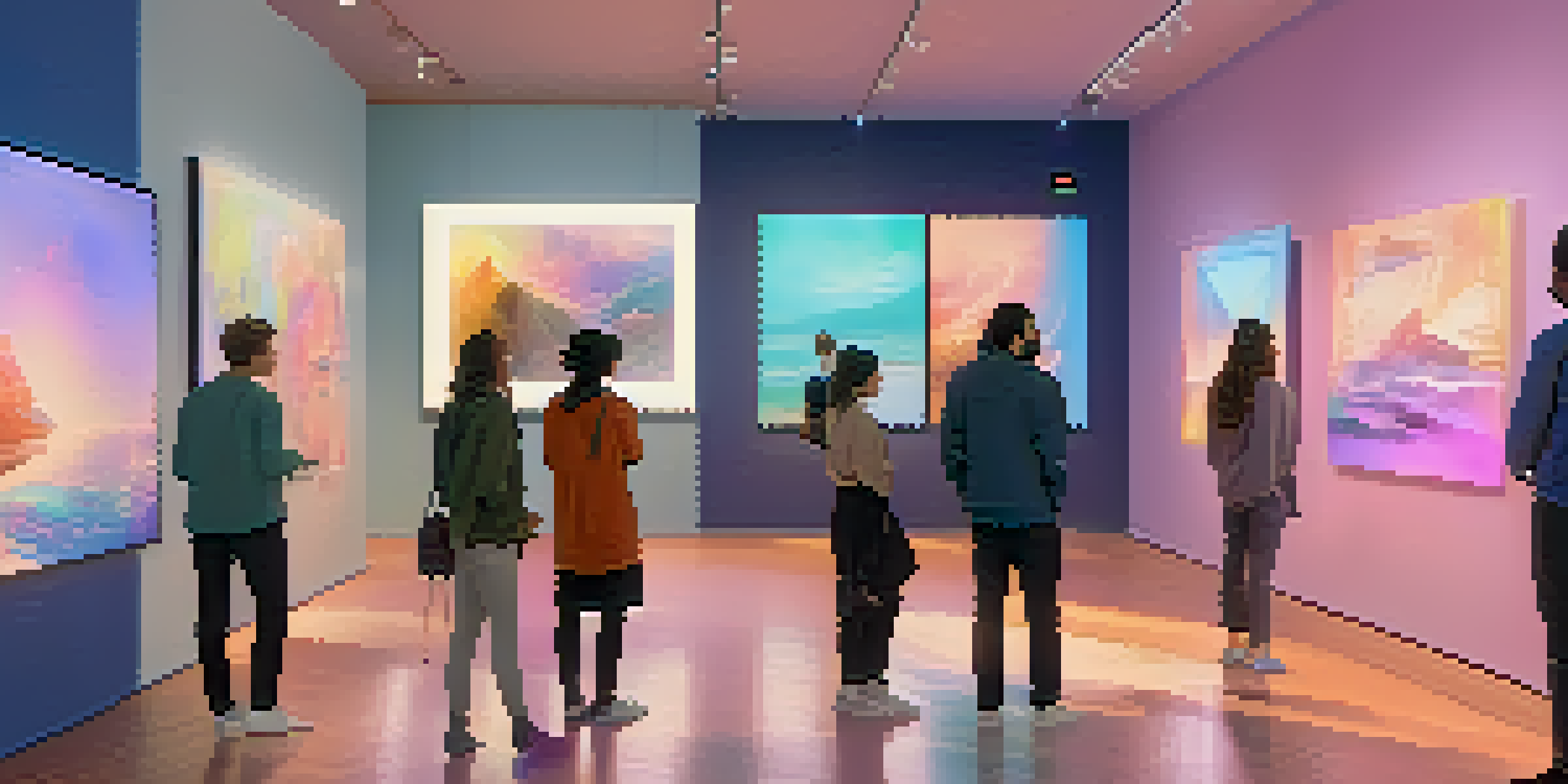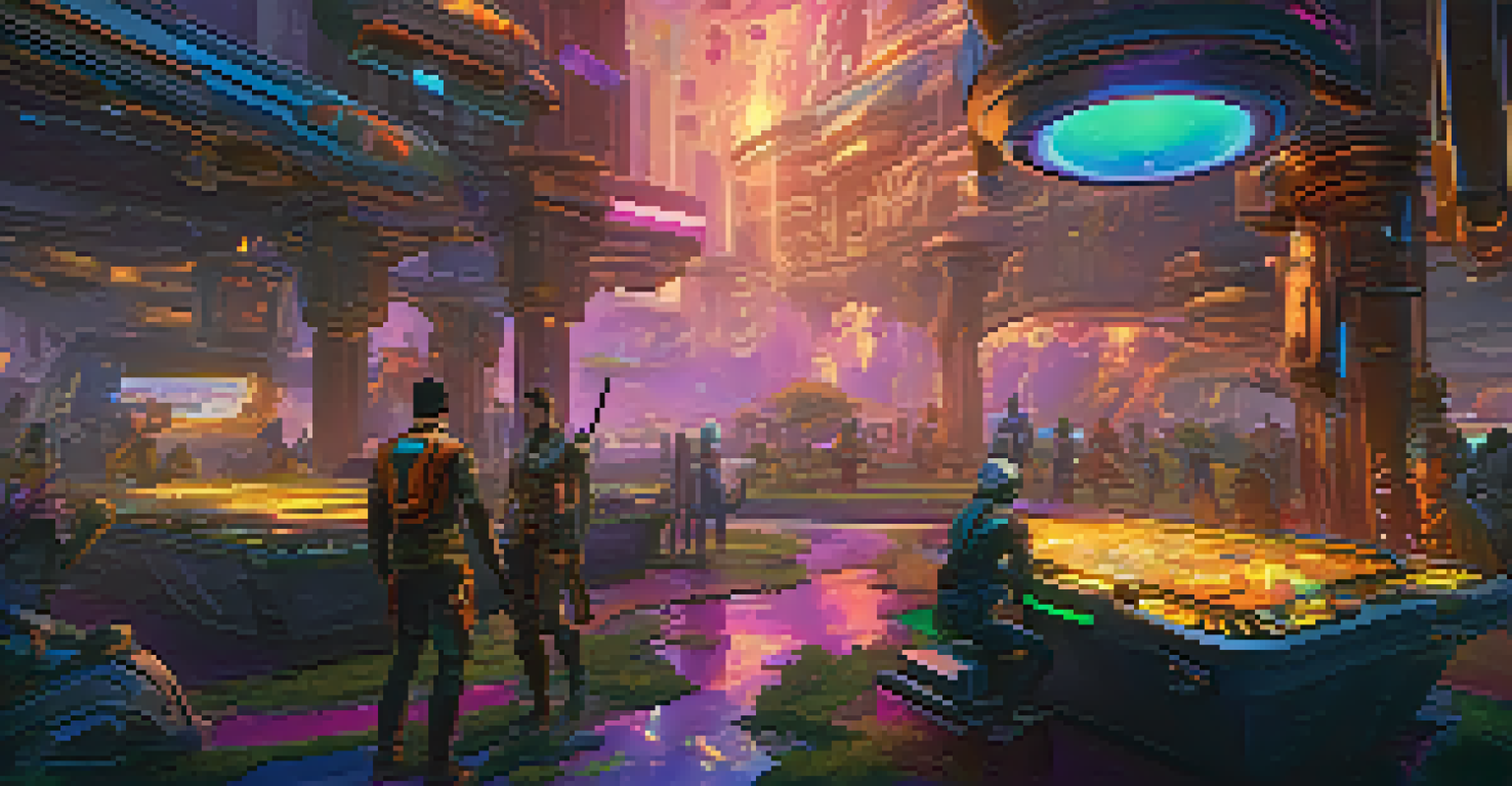Token Standards: Understanding ERC-721 and ERC-1155 for NFTs

What Are Token Standards in the NFT Space?
Token standards are essential rules that define how tokens operate on a blockchain. In the world of NFTs (non-fungible tokens), these standards ensure that digital assets can be created, bought, and sold in a consistent manner. By adhering to specific protocols, developers can ensure compatibility across different marketplaces and platforms.
The blockchain is not just a technology; it's a revolution that introduces a new paradigm of trust and ownership.
Think of token standards as a common language that all NFTs must speak to interact seamlessly within the ecosystem. This prevents confusion and ensures that a digital artwork, for instance, can be easily transferred between wallets or sold on various NFT marketplaces. Without these standards, the NFT space would be chaotic and fragmented.
Two prominent token standards in the NFT landscape are ERC-721 and ERC-1155, each designed with unique features that cater to different use cases. Understanding these standards is crucial for artists, collectors, and developers alike, as they navigate the vibrant world of digital assets.
Understanding ERC-721: The Original NFT Standard
ERC-721 was introduced in 2017 and is often considered the foundation of NFTs. This standard allows for the creation of unique tokens, meaning each token can represent a distinct item or asset. This uniqueness is what makes ERC-721 well-suited for digital art, collectibles, and other one-of-a-kind items.

For example, if you purchased an ERC-721 token that represents a specific piece of digital artwork, that token is irreplaceable and can’t be exchanged on a one-to-one basis with another token. This is akin to owning a rare painting; even if two pieces look similar, their value and uniqueness are what set them apart.
Importance of Token Standards
Token standards like ERC-721 and ERC-1155 define how NFTs operate, ensuring compatibility and consistency across platforms.
The simplicity and clarity of ERC-721 have made it a popular choice among artists and creators. However, its focus on individuality can also limit its functionality, leading to the need for more versatile standards like ERC-1155.
Exploring ERC-1155: The Multi-Token Standard
ERC-1155, introduced in 2018, revolutionizes the NFT landscape by allowing for the creation of multiple token types within a single contract. This means that developers can create both fungible tokens (like cryptocurrencies) and non-fungible tokens under the same standard. This flexibility makes it a more efficient option for developers.
Digital art is a reflection of our world, and NFTs are paving the way for a new era of artistic expression and ownership.
Imagine a gaming scenario where a player might own various items—some unique swords (ERC-721) and a set of healing potions (fungible). By using ERC-1155, all of these items can be managed under one contract, simplifying the process for both developers and users. This streamlines transactions and reduces gas fees, making it a more cost-effective option.
The versatility of ERC-1155 can cater to a wide range of applications, from gaming to digital art and beyond. As more creators and developers recognize its potential, ERC-1155 is becoming increasingly popular in the NFT space.
Key Differences Between ERC-721 and ERC-1155
While both ERC-721 and ERC-1155 serve the NFT market, their fundamental differences are important to understand. ERC-721 focuses solely on unique tokens, whereas ERC-1155 allows for a mix of fungible and non-fungible tokens. This distinction affects how developers choose to implement these standards in their projects.
Another major difference lies in cost and efficiency. With ERC-721, each token requires a separate contract, increasing transaction costs and complexity. On the other hand, ERC-1155 enables batch transactions, allowing multiple tokens to be transferred in a single transaction, which can save time and reduce fees.
Unique vs. Multi-Token Standards
ERC-721 focuses on unique tokens, while ERC-1155 allows for both fungible and non-fungible tokens, catering to diverse use cases.
Ultimately, the choice between ERC-721 and ERC-1155 depends on the specific needs of a project. Developers must carefully consider their goals and the type of assets they wish to create to select the most suitable standard.
Use Cases for ERC-721 Tokens
ERC-721 tokens are primarily used for unique digital assets where individuality is paramount. This includes digital art, collectibles, and virtual real estate. For instance, an artist can tokenize their artwork, ensuring that buyers own a one-of-a-kind piece that cannot be replicated.
In the gaming industry, ERC-721 can represent exclusive in-game items, such as rare skins or characters. These items often carry a higher value due to their scarcity, providing gamers with a sense of ownership and investment in their gaming experience.
Moreover, ERC-721 has facilitated the rise of marketplaces dedicated to unique collectibles, like CryptoKitties. These platforms allow users to buy, sell, and trade their unique digital assets, building vibrant communities around them.
Use Cases for ERC-1155 Tokens
ERC-1155 is particularly advantageous in scenarios where a project requires both unique and fungible assets. A prime example is in gaming, where players may need to manage a variety of items, from unique weapons to stacks of consumables. This versatility allows developers to create richer gaming environments.
Another use case is in digital auctions, where artists can auction both unique pieces and a limited number of reproductions. This approach allows creators to reach a broader audience while maintaining the value of their unique works.
Future of NFT Standards
The evolution of token standards will shape the NFT landscape, as developers seek to enhance functionality and user experience.
The ability to handle multiple token types efficiently makes ERC-1155 a favorite among developers looking to create complex ecosystems, whether in gaming, art, or decentralized finance (DeFi). Its adaptability positions it as a forward-looking standard in the evolving NFT marketplace.
The Future of NFT Token Standards
As the NFT space continues to grow, the evolution of token standards like ERC-721 and ERC-1155 will play a critical role in shaping its future. Developers are constantly exploring new ways to enhance functionality, improve user experience, and reduce costs. This innovation is crucial for maintaining momentum in an increasingly competitive market.
Emerging standards and upgrades may build upon the existing ERC-721 and ERC-1155 frameworks, addressing limitations and introducing new features. For instance, the idea of combining the strengths of both standards could lead to a hybrid model that offers the best of both worlds.

Ultimately, as more creators, developers, and users engage with NFTs, the demand for intuitive, flexible, and efficient token standards will only increase. Keeping an eye on these developments will be essential for anyone invested in the NFT ecosystem.